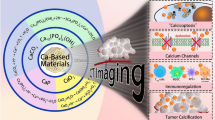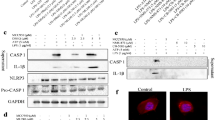Abstract
The role of inositol polyphosphates (InsPs) in the mediation of cellular apoptosis was investigated in mouse MC3T3 osteoblastic cell line. Extracellular administration of InsP4, InsP5, and InsP6 increased apoptosis in a dose-dependent manner. InsP6 was more potent than InsP5 and InsP4 in promoting apoptosis. Inositol hexasulfate (InsS6), a structural analog of InsP6, was used to determine specificity of InsP6-induced apoptosis as measured by acridine orange/ethidium bromide, flow cytometry, and DNA degradation. In order to study the effects of endogenous InsPs on apoptosis, we used NaF and antimycin A as treatment agents to manipulate intracellular levels of InsPs. NaF is known to increase levels of higher InsPs by inhibiting InsPs phosphatases, a process that is reversed by antimycin A because InsPs kinases are inhibited as a result of depletion of cellular ATP pools. Apoptosis was induced in MC3T3 cells in a NaF dose- and time-dependent manner. Approximately 50% apoptosis was observed at 1 mM NaF in 8 h. Prior treatment with 10 μM antimycin A for 30 min significantly reduced the NaF-induced apoptosis as compared with its control. Additionally, we measured changes in AKT phosphorylation, cleavage of caspase-3 and caspase-9, and release of cytochrome C from mitochondria into cytosol. These changes coincided with total cellular InsPs under similar conditions. The data indicated that NaF-induced changes in apoptotic markers could be due to an increased endogenous InsPs that were partially reversed by antimycin A treatment.





Similar content being viewed by others
Abbreviations
- MEM:
-
Minimum essential medium
- FBS:
-
Fetal bovine serum
- PH:
-
Plekstrin homology domain
- InsPs:
-
Inositol polyphosphates
- PIP:
-
Phosphatidlylinositol phosphates
- AKT/PKB:
-
Protein kinase B
- PI-3K:
-
Phosphatidylinositol 3-Kinase
- DAB:
-
Diaminobenzidine
References
Berridge MJ, Irvine RF (1989) Inositol phosphates and cell signaling. Nature 341:197–205. doi:10.1038/341197a0
Ali N, Craxton A, Sumner M, Shears SB (1995) Effects of aluminum on the hepatic inositol polyphosphate phosphatase. Biochem J 305:557–561
Saiardi A, Sciambi C, McCaffery JM, Wendland B, Snyder SH (2002) Inositol pyrophosphates regulate endocytic trafficking. Proc Natl Acad Sci USA 99:14206–14211. doi:10.1073/pnas.212527899
Luo HR, Saiardi A, Yu H, Nagata E, Ye K, Snyder SH (2002) Inositol pyrophosphates are required for DNA hyper-recombination in protein kinase C1 mutant yeast. Biochemistry 41:2509–2515. doi:10.1021/bi0118153
Hanakahi LA, Bartlet-Jones M, Chappell C, Pappin D, West SC (2000) Binding of inositol phosphate to DNA-PK and stimulation of double-strand break repair. Cell 102:721–729. doi:10.1016/S0092-8674(00)00061-1
York JD, Odom AR, Murphy R, Ives EB, Wente SR (1999) A phospholipase C-dependent inositol polyphosphate kinase pathway required for efficient messenger RNA export. Science 285:96–100. doi:10.1126/science.285.5424.96
Menniti FS, Miller RN, Putney JW Jr, Shears SB (1993) Turnover of inositol polyphosphate pyrophosphates in pancreatoma cells. J Biol Chem 268:3850–3856
Shears SB, Ali N, Craxton A, Bembenek ME (1995) Synthesis and metabolism of bis-diphosphoinositol tetrakisphosphate in vitro and in vivo. J Biol Chem 270:10489–10497. doi:10.1074/jbc.270.18.10489
Jimenez C, Jones DR, Rodriguez-Viciana P et al (1998) Identification and characterization of a new oncogene derived from the regulatory subunit of phosphoinositide 3-kinase. EMBO J 17:743–753. doi:10.1093/emboj/17.3.743
Razzini G, Berrie CP, Vignati S et al (2000) Novel functional PI 3-kinase antagonists inhibit cell growth and tumorigenicity in human cancer cell lines. FASEB J 14:1179–1187
Janeb M, Thompson LU (2000) Phytic acid in wheat bran affects colon morphology, cell differentiation and apoptosis. Carcinogenesis 21:1547–1552. doi:10.1093/carcin/21.8.1547
Vucenik I, Shamsuddin AM (2003) Cancer inhibition by inositol hexaphosphate and inositol: from laboratory to clinic. J Nutr 133:3778S–3784S
Vucenik I, Shamsuddin AM (2006) Protection against cancer by dietary IP6 and inositol. Nutr Cancer 55:109–125. doi:10.1207/s15327914nc5502_1
Sharma G, Singh RP, Agarwal R (2003) Growth inhibitory and apoptotic effects of inositol hexaphosphate in transgenic adenocarcinoma of mouse prostate (TRAMP-C1) cells. Int J Oncol 23:1413–1418
Agarwal C, Dhanalakshmi S, Singh RP, Agarwal R (2003) Inositol hexaphosphate inhibits constitutive activation of NF-kappa B in androgen-independent human prostate carcinoma DU145 cells. Anticancer Res 23:3855–3861
Singh RP, Sharma G, Mallikarjuna GU, Dhanalakshmi S, Agarwal C, Agarwal R (2004) In vivo suppression of hormone-refractory prostate cancer growth by inositol hexaphosphate: induction of insulin-like growth factor binding protein-3 and inhibition of vascular endothelial growth factor. Clin Cancer Res 10:244–250. doi:10.1158/1078-0432.CCR-1080-3
Agarwal C, Dhanalakshmi S, Singh RP, Agarwal R (2004) Inositol hexaphosphate inhibits growth and induces G1 arrest and apoptotic death of androgen-dependent human prostate carcinoma LNCaP cells. Neoplasia 6:646–659. doi:10.1593/neo.04232
Vucenik I, Ramakrishna G, Tantivejkul K, Anderson LM, Ramljak D (2005) Inositol hexaphosphate (IP6) blocks proliferation of human breast cancer cells through a PKCδ-dependent increase in p27Kip1 and decrease in retinoblastoma protein (pRb) phosphorylation. Breast Cancer Res Treat 91:35–45. doi:10.1007/s10549-004-6456-5
Dorsey M, Benghuzzi H, Tucci M, Cason Z (2005) Growth and cell viability of estradiol and IP-6 treated Hep-2 laryngeal carcinoma cells. Biomed Sci Instrum 41:205–210
Somasundar P, Riggs DR, Jackson BJ, Cunningham C, Vona-Davis L, McFadden DW (2005) Inositol hexaphosphate (IP6): a novel treatment for pancreatic cancer. J Surg Res 126:199–203. doi:10.1016/j.jss.2005.01.022
Piccolo E, Vignati S, Maffucci T et al (2004) Inositol pentakisphosphate promotes apoptosis through the PI 3-K/Akt pathway. Oncogene 23:1754–1765. doi:10.1038/sj.onc.1207296
Maffucci T, Piccolo E, Cumashi A et al (2005) Inhibition of the phosphatidylinositol 3-kinase/Akt pathway by inositol pentakisphosphate results in antiangiogenic and antitumor effects. Cancer Res 65:8339–8349. doi:10.1158/0008-5472.CAN-05-0121
Ferry S, Matsuda M, Yoshida H, Hirata M (2002) Inositol hexakisphosphate blocks tumor cell growth by activating apoptotic machinery as well as by inhibiting the Akt/NFκB-mediated cell survival pathway. Carcinogenesis 23:2031–2041. doi:10.1093/carcin/23.12.2031
Sakamoto K, Vucenik I, Shamsuddin AM (1993) [3H]-Phytic acid (Inositol hexaphosphate) is absorbed and distributed to various tissues in rats. J Nutr 123:713–720
Vucenik I, Shamsuddin AM (1994) [3H]-Inositol hexaphosphate (phytic acid) is rapidly absorbed and metabolized by murine and human malignant cells in vitro. J Nutr 124:861–868
Stephens LR, Jackson TR, Hawkins PT (1993) Agonist-stimulated synthesis of phosphatidylinositol(3, 4, 5)-triphosphate: a new intracellular signaling system? Biochim Biophys Acta 1179:27–75. doi:10.1016/0167-4889(93)90072-W
Klippel A, Escobedo MA, Washowicz MS et al (1998) Activation of phosphatidylinositol 3-kinase is sufficient for cell cycle entry and promotes cellular changes characteristic of oncogenic transformation. Mol Cell Biol 18:5699–5711
Nagata E, Luo HR, Saiardi A, Bae BII, Suzuki N, Snyder SH (2005) Inositol hexakisphosphate kinase-2, a physiologic mediator of cell death. J Biol Chem 280:1634–1640. doi:10.1074/jbc.M409416200
Bellido T, Huening M, Raval-Pandya M, Manolagas SC, Christakos S (2000) Calbindin-D28k is expressed in osteoblastic cells and suppresses their apoptosis by inhibiting caspase-3 activity. J Biol Chem 275:26328–26332. doi:10.1074/jbc.M003600200
Tang SY, Xie H, Yuan LQ et al (2007) Apelin stimulates proliferation and suppresses apoptosis of mouse osteoblastic cell line MC3T3–E1 via JNK and PI3-K/Akt signaling pathways. Peptides 28:708–718. doi:10.1016/j.peptides.2006.10.005
Safrany ST, Shears SB (1998) Turnover of bis-diphosphoinositol tetrakisphosphate in a smooth muscle cell line is regulated by beta2adrenergic receptors through a cAMP-mediated, A-kinase-independent mechanism. EMBO J 17:1710–1716. doi:10.1093/emboj/17.6.1710
Raina K, Rajamanickam S, Singh RP, Agarwal R (2008) Chemopreventive efficacy of inositol hexaphosphate against prostate tumor growth and progression in TRAMP mice. Clin Cancer Res 14:3177–3184. doi:10.1158/1078-0432.CCR-07-5275
Shamsuddin AM, Baten A, Lalwani ND (1992) Effect of inositol hexaphosphate on growth and differentiation in K-562 erythroleukemia cell line. Cancer Lett 64:195–202. doi:10.1016/0304-3835(92)90043-U
Grases F, Simonet BT, Vucenik I, Perello J, Prieto RM, Shamsuddin AM (2002) Effects of exogenous inositol hexakisphosphate (InsP6) on the levels of InsP6 and of inositol trisphosphate (InsP3) in malignant cells, tissues and biological fluids. Life Sci 71:1535–1546. doi:10.1016/S0024-3205(02)01927-6
Grases F, Simonet BT, Prieto RM, March JG (2001) Variation of InsP4, InsP5 and InsP6 levels in tissues and biological fluids depending on dietary phytate. J Nutr Biochem 12:595–601. doi:10.1016/S0955-2863(01)00178-4
Grases F, Simonet BT, Vucenik I et al (2001) Absorption and excretion of orally administered inositol hexaphosphate (IP6 or phytate) in humans. Biofactors 15:53–61. doi:10.1002/biof.5520150105
Grases F, Costa-Bauza A, Prieto RM (2005) Intracellular and extracellular myo-inositol hexakisphosphate (InsP6), from rats to humans. Anticancer Res 25:2593–2597
Graf E, Eaton JW (1990) Antioxidant functions of phytic acid. Free Radic Biol Med 8:61–69. doi:10.1016/0891-5849(90)90146-A
Thompson LU, Zhang L (1991) Phytic acid and minerals: effect on early markers of risk for mammary and colon carcinogenesis. Carcinogenesis 12:2041–2045. doi:10.1093/carcin/12.11.2041
Tantivejkul K, Vucenik I, Shamsuddin AM (2003) Inositol hexaphosphate (IP6) inhibits key events of cancer metastasis: In vitro studies of adhesion, migration and invasion of MDA-MB 231 human breast cancer cells. Anticancer Res 23:3671–3680
Elliott J, Scarpello JH, Morgan NG (2002) Differential effects of genistein on apoptosis induced by fluoride and pertussis toxin in human and rat pancreatic islets and RINm5F cells. J Endocrinol 172:137–143. doi:10.1677/joe.0.1720137
Refsnes M, Schwarze PE, Holme JA, Lag M (2003) Fluoride-induced apoptosis in human epithelial lung cells (A549 cells): role of different G-protein-linked signal systems. Hum Exp Toxicol 22:111–123. doi:10.1191/0960327103ht322oa
Anuradha CD, Kanno S, Hirano S (2001) Oxidative damage to mitochondria is a preliminary step to caspase-3 activation in fluoride-induced apoptosis in HL-60 cells. Free Radic Biol Med 31:367–373. doi:10.1016/S0891-5849(01)00591-3
Thrane EV, Refsnes M, Thoresen GH, Lag M, Schwarze PE (2001) Fluoride-induced apoptosis in epithelial lung cells involves activation of MAP kinase p38 and possibly JNK. Toxicol Sci 61:83–91. doi:10.1093/toxsci/61.1.83
Batty IH, Nahorsky SR (1992) Analysis of [3H]inositol phosphate formation and metabolism in cerebral-cortical slices. Evidence for a dual metabolism of inositol 1, 4-bisphosphate. Biochem J 288:807–811
Safrany ST, Caffrey JJ, Yang X et al (1998) A novel context for the `MutT’ module, a guardian of cell integrity, in a diphosphoinositol polyphosphate phosphohydrolase. EMBO J 17:6599–6607. doi:10.1093/emboj/17.22.6599
King MA, Radicchi-Mastroianni MA (2002) Antimycin A induced apoptosis of HL-60 cells. Cytometry 49:106–112. doi:10.1002/cyto.10156
Han YH, Kim SH, Kim SZ, Park WH (2008) Antimycin A as a mitochondrial electron transport inhibitor prevents the growth of human lung cancer A549 cells. Oncol Rep 20:689–693
Formigli L, Papucci L, Tani A et al (2000) Aponecrosis: morphological and biochemical exploration of a syncretic process of cell death sharing apoptosis and necrosis. J Cell Physiol 182:41–49. doi:10.1002/(SICI)1097-4652(200001)182:1<41::AID-JCP5>3.0.CO;2-7
Poggioli J, Weiss SJ, McKinney JS, Putney JW Jr (1983) Effects of antimycin A on receptor-activated calcium mobilization and phosphoinositide metabolism in rat parotid gland. Mol Pharmacol 23:71–77
Sugiya H, Putney JW Jr (1988) Substance P receptor desensitization requires receptor activation but not phospholipase C. Am J Physiol 255:C149–C154
Oliver KG, Putney JW Jr, Obie JF, Shears SB (1992) The interconversion of inositol 1, 3, 4, 5, 6-pentakisphosphate and inositol tetrakisphosphates in AR4–2J cells. J Biol Chem 267:21528–21534
Acknowledgment
This work was supported in part by funds from the Graduate Institute of Technology, Arkansas Space Grant Consortium, Thomsen Hall Foundation, Arkansas NSF-EPSCoR, and a seed grant from the Office of Research and Sponsored Programs, UALR. Authors thank Ms. Diane Haynes for critically reading the manuscript. Rakhee Agarwal thanks Graduate Institute of Technology for a Graduate Assistantship.
Author information
Authors and Affiliations
Corresponding author
Rights and permissions
About this article
Cite this article
Agarwal, R., Mumtaz, H. & Ali, N. Role of inositol polyphosphates in programmed cell death. Mol Cell Biochem 328, 155–165 (2009). https://doi.org/10.1007/s11010-009-0085-6
Received:
Accepted:
Published:
Issue Date:
DOI: https://doi.org/10.1007/s11010-009-0085-6




